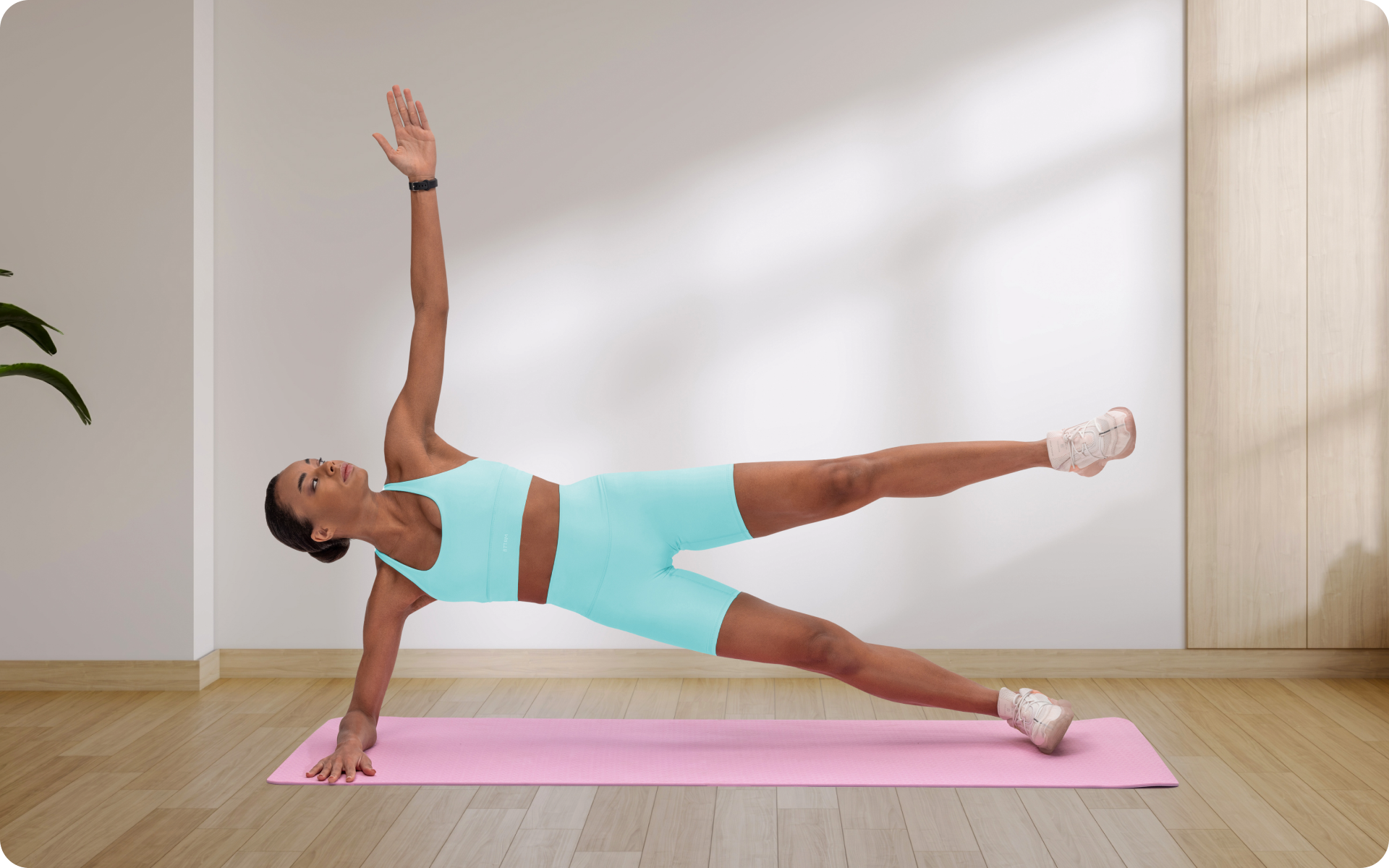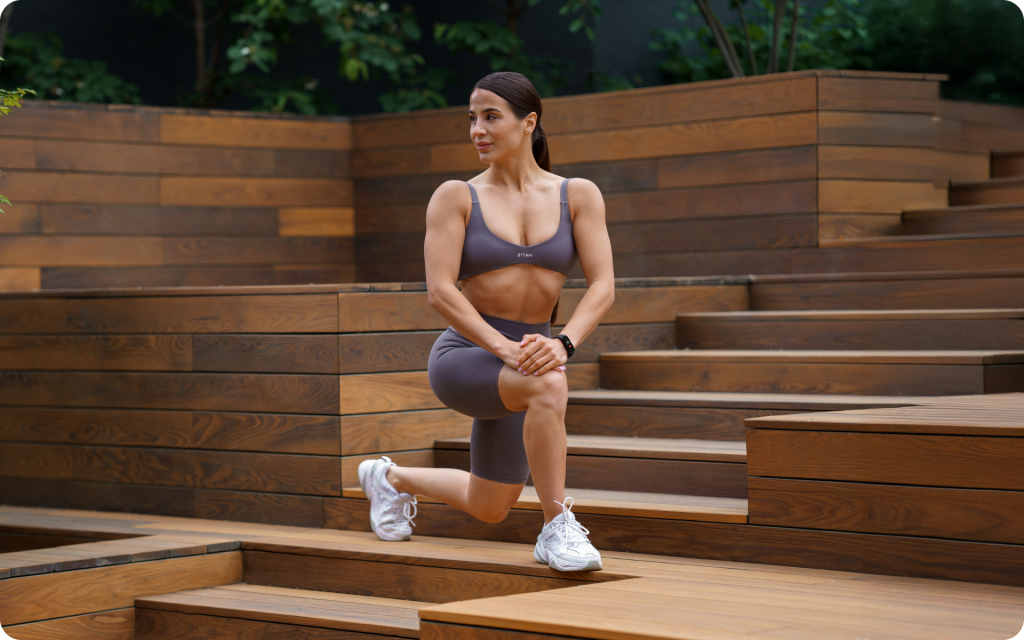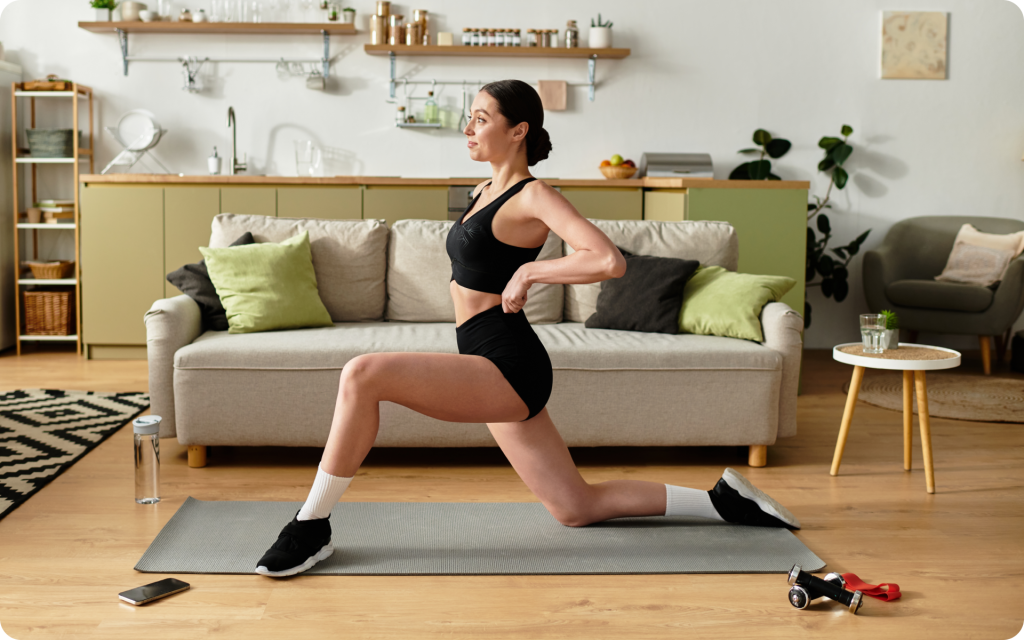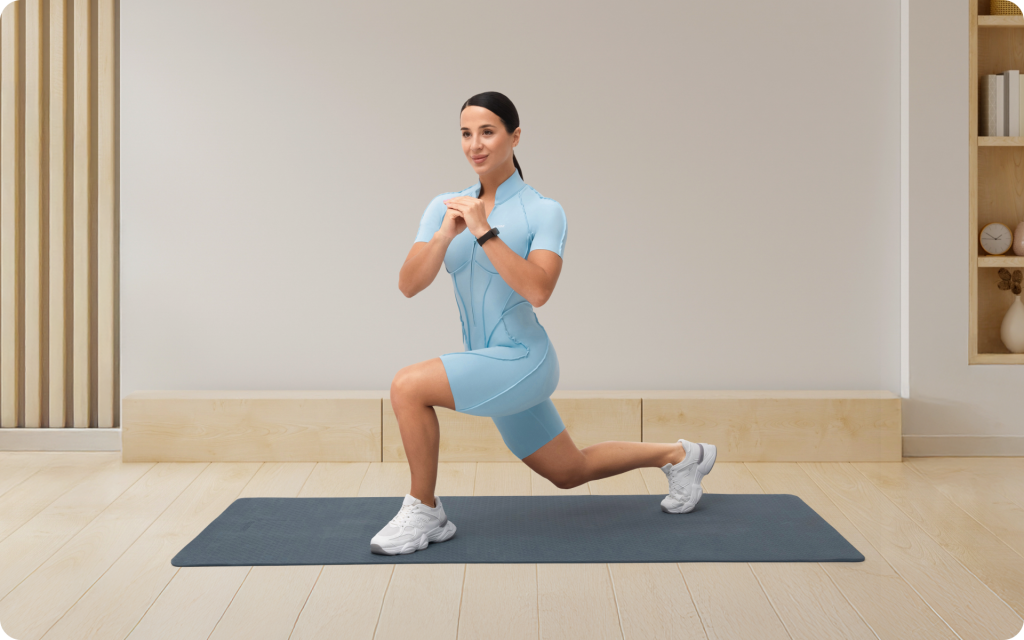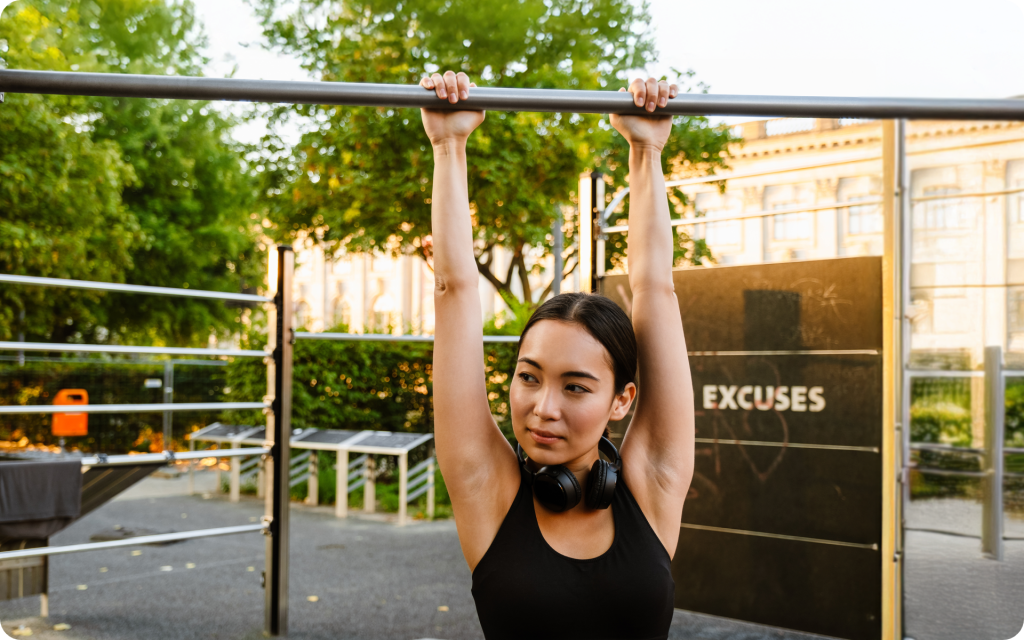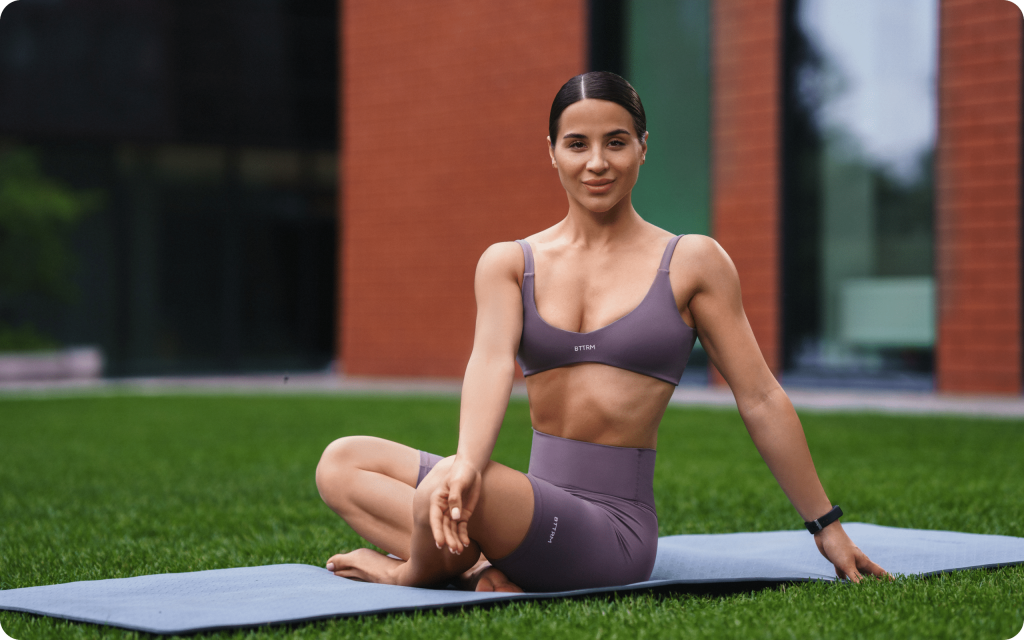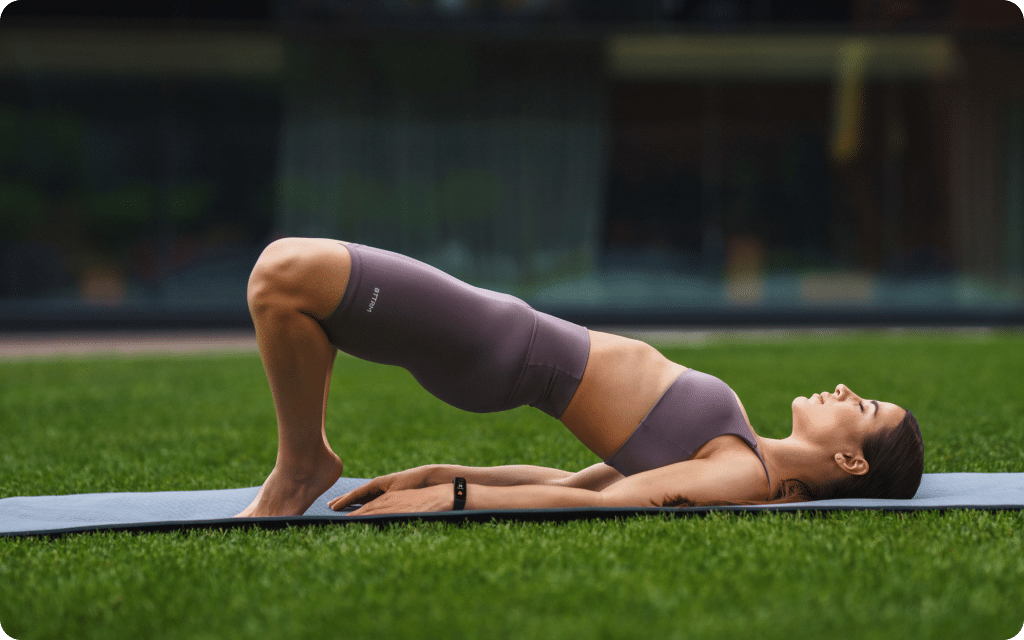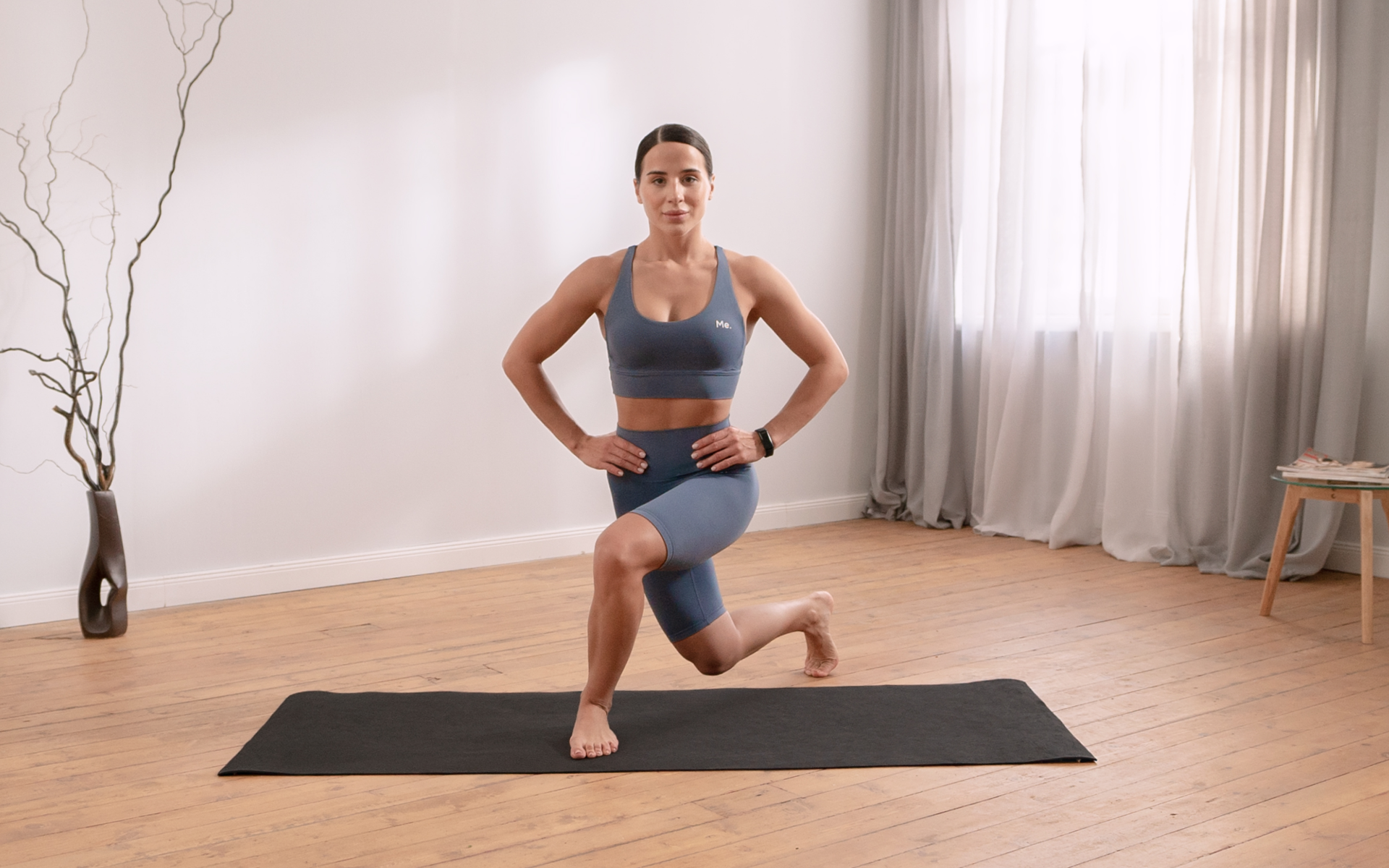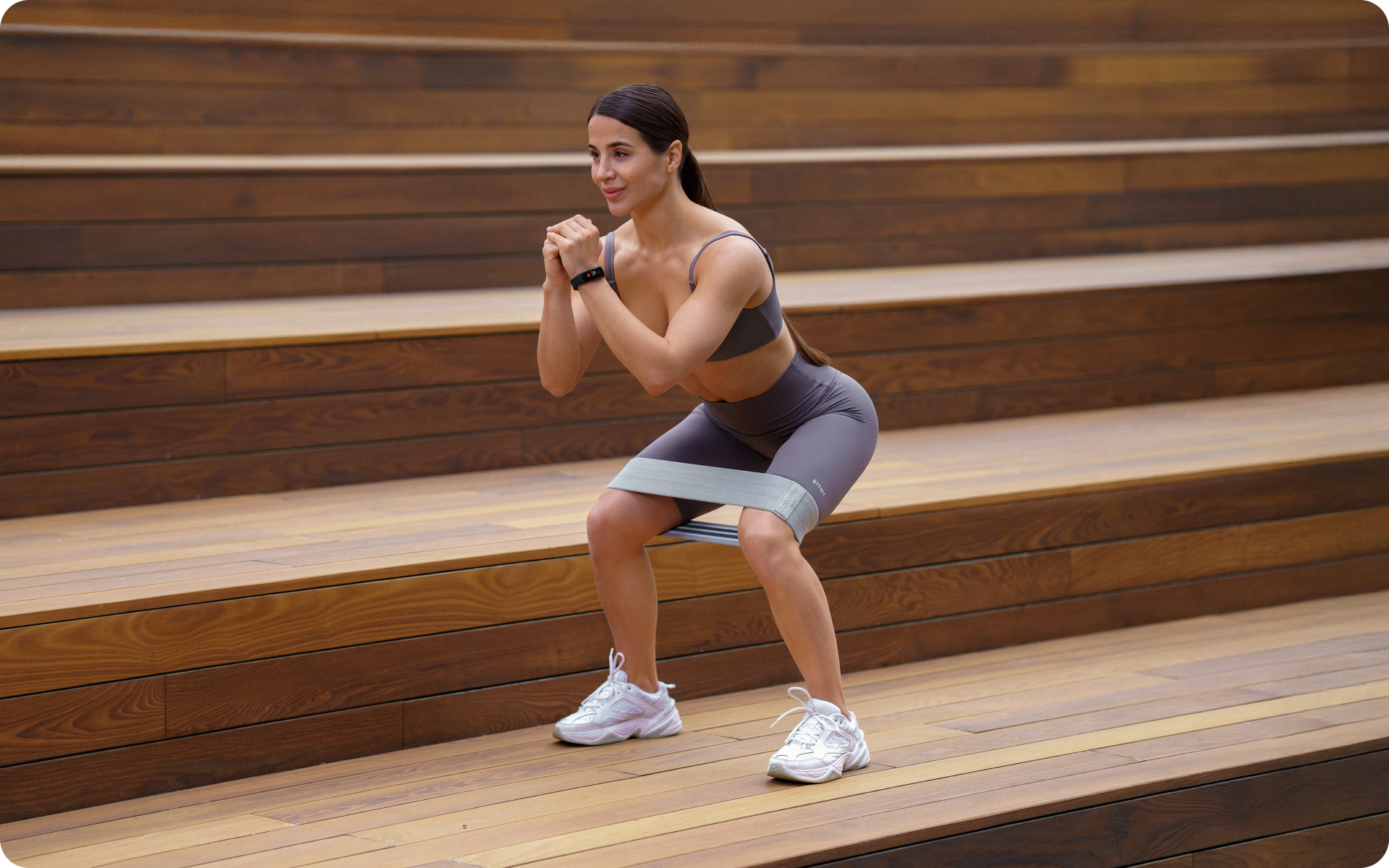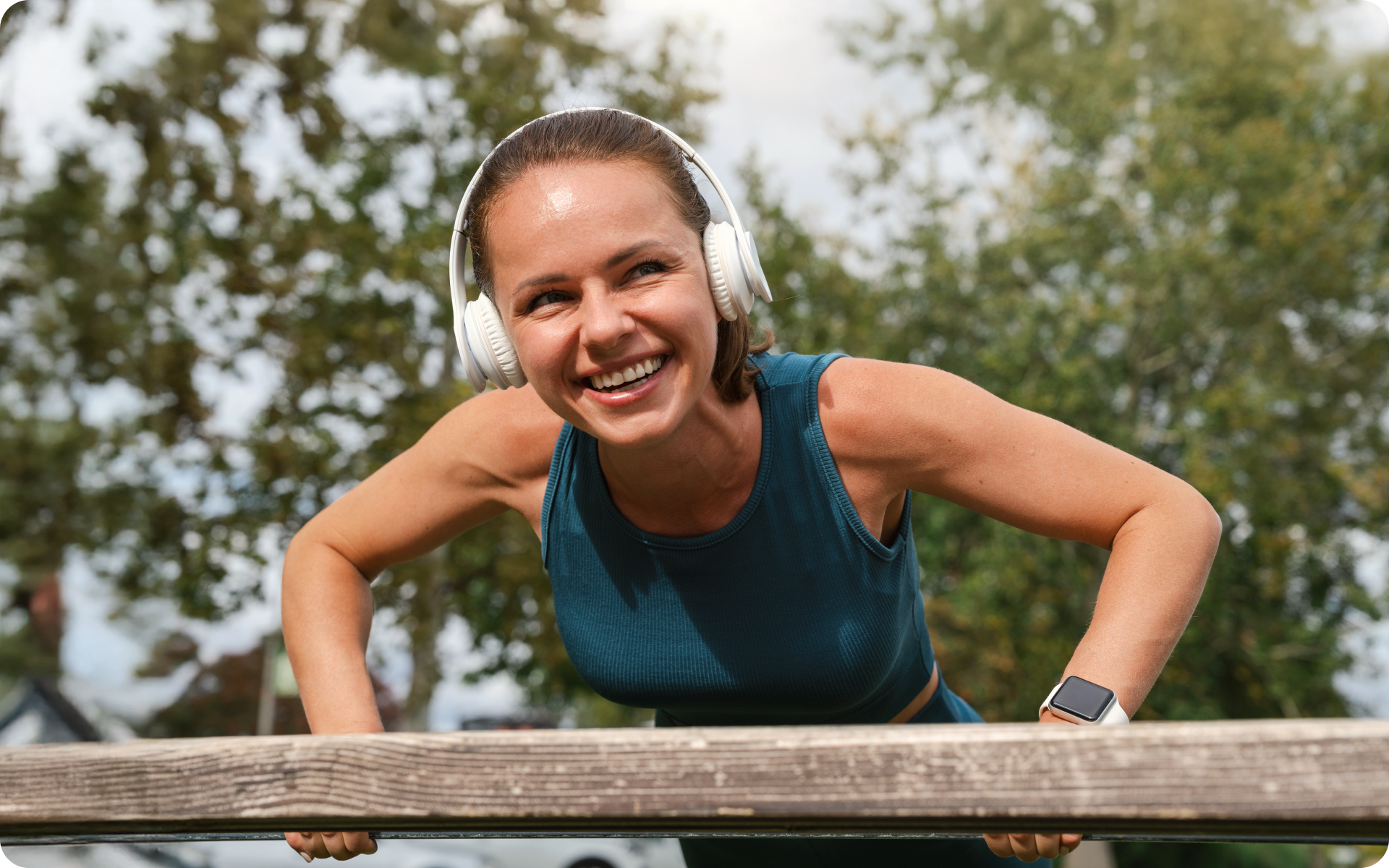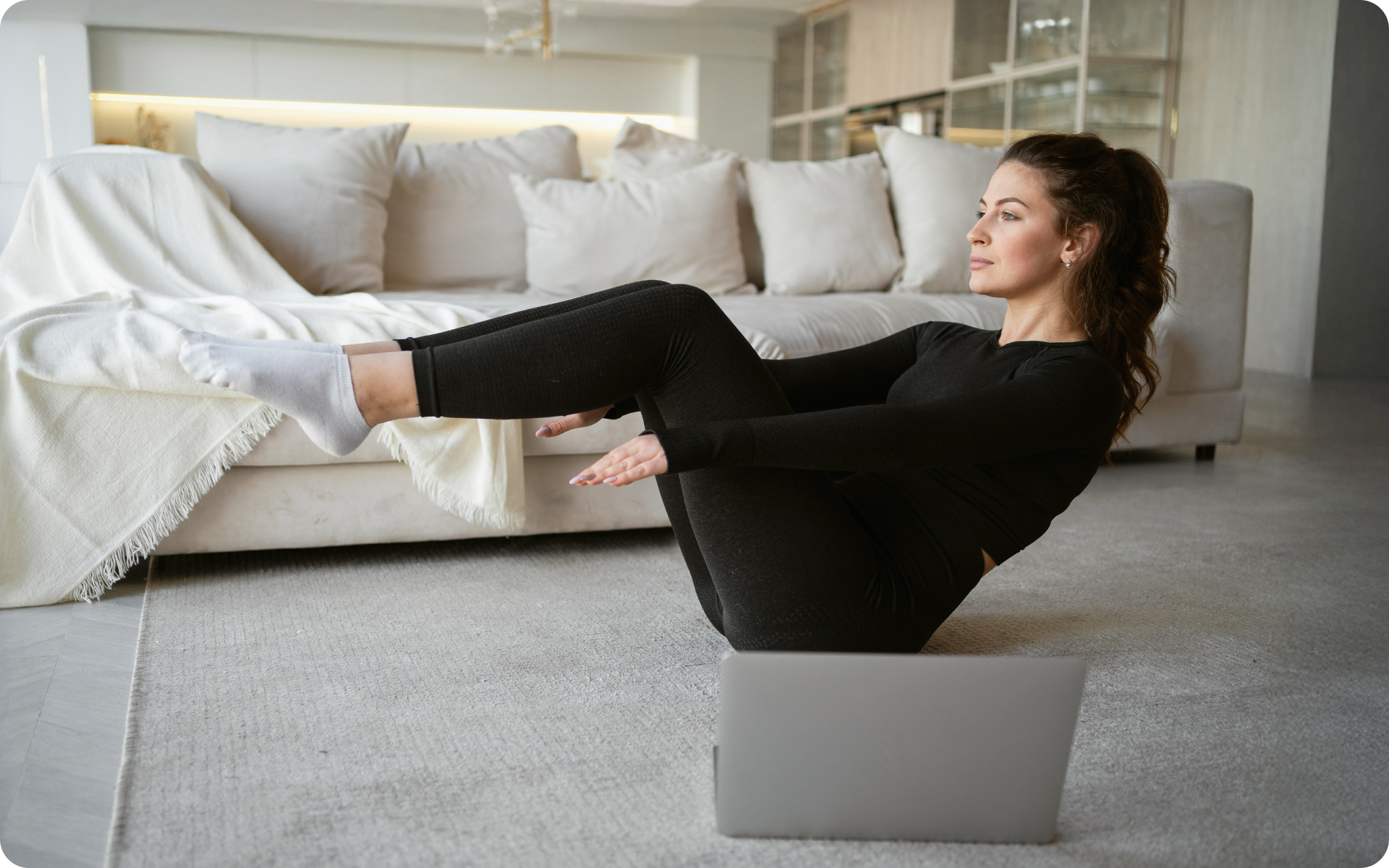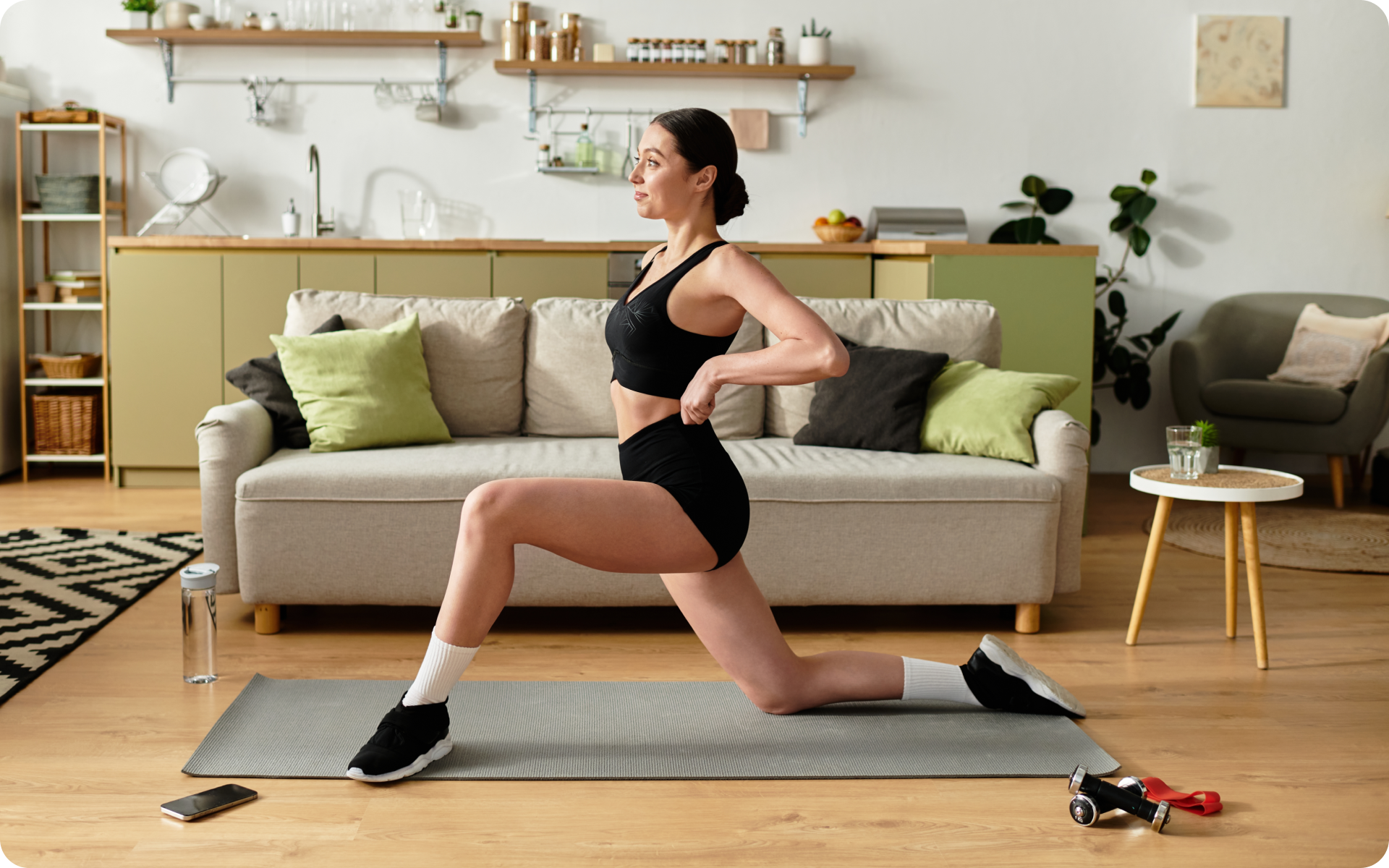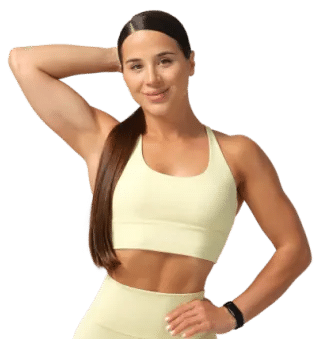Exercise is an essential part of everyday life. Unfortunately, due to injury, surgery, or certain medical conditions, you may find yourself sidelined and unable to work out as much as before, which can be frustrating.
This limitation is where non-weight-bearing exercises come into play.
Most health experts and physical therapists recommend these gentler workouts for individuals dealing with related challenges as a way to help them maintain their fitness journey and improve muscle strength without aggravating injuries or putting pressure on the joints.
If your medical provider has recommended that you try non-weight-bearing exercises for weight loss or improved general health, and you’re unsure where to start, read on to learn more about such workouts, their benefits, and more.
What Are Simple Non-Weight-Bearing Exercises?
Some simple and accessible non-weight-bearing activities (also known as non-impact activities) include (1):
- Swimming laps
- Indoor cycling
- Yoga
- Pilates
- Any stretching or flexibility exercises that do not involve forward-bending movements.
What Is Considered Non-Weight-Bearing Activity?
A non-weight-bearing activity refers to any exercise or motion that a person does without supporting their weight (2). For example, while swimming, your weight is supported by the water, which makes swimming and water aerobics good examples of non-weight-bearing cardio exercises.
As mentioned above, most healthcare providers will recommend these activities for individuals:
- Recovering from an injury or surgery on a limb
- Suffering from joint pain due to old age or excess weight
- Individuals with limited mobility in their legs
- Dealing with conditions such as arthritis or osteoporosis
Reasons why BetterMe is a safe bet: a wide range of calorie-blasting workouts, finger-licking recipes, 24/7 support, challenges that’ll keep you on your best game, and that just scratches the surface! Start using our app and watch the magic happen.
How To Stay In Shape When Non-Weight Bearing?
Doing non-weight-bearing exercises at home can feel frustrating.
Because the doctor said that you are not allowed to place any weight on one (or both) of the lower limbs, restricted movement can make you feel as though there are no exercises that you can engage in.
However, this belief is not entirely true. You can still stay in shape and avoid further injury by exercising different parts of your body.
Here’s how:
-
Focus On Upper Body Strength
Your lower half might be out of commission for a while, but that doesn’t mean you need to rest and forgo exercise until you completely heal.
Instead of leading a sedentary lifestyle during recovery, use this time to work on your upper body.
According to studies, increasing your upper body strength is beneficial for your cardio-fitness health and athletic performance.
In a 2023 study, researchers examined the effects of upper body training on aerobic fitness and found that doing this helps increase oxygen uptake and utilization in the muscles (3). Note that better oxygen uptake in the muscle leads to improved energy production and endurance, which makes you a better athlete.
In another study published in 2024, researchers found that peak upper body strength can improve sprinting, running, and jumping performance.
While researchers admitted that we need more data on the matter, they found that there was a positive link between (4):
- Strong upper body muscles and faster sprinting
- Strong core muscles and quick direction changes
- Strong back muscles and better drop jumps
If you are an athlete, the above studies suggest that non-weight-bearing activities can improve your athletic performance, even without engaging the lower body.
If you aren’t an athlete, upper-body workouts can complement other exercises and also enhance your overall health and muscle strength.
-
Switch Focus To Cardiovascular Health
Staying in shape doesn’t mean having big and strong muscles or a flatter stomach.
It means that often-overlooked things, such as your heart and lungs, are in excellent shape.
Cardio can become a forgotten aspect of fitness, especially for those who prioritize weightlifting. Non-weight-bearing workouts, such as swimming, aqua aerobics, and indoor cycling, are effective ways to improve your cardiovascular health.
Remember that better cardiovascular health means a reduced risk of heart disease and chronic illnesses, as well as improved heart and lung function, and better mental health and quality of life (5).
-
Work On Your Flexibility
Many people often forget this aspect of fitness. Research and experts, however, show that ignoring your fitness has more disadvantages than advantages.
Working on your flexibility when stuck to doing only non-weight-bearing exercises at home can help:
- Maintain healthy joints and achieve a better range of motion.
- Improve lung and respiratory muscle function.
- Reduce the risk of preeclampsia in women.
- Reduce or manage joint pain.
- Improve the quality of life.
- Increase blood flow (6, 7, 8).
Yoga and Pilates are excellent examples of non-weight-bearing flexibility exercises that can help you maintain your shape while recovering from an injury. Check out this article for more effective recovery workouts.
Read more: Full Body Calisthenics Routine For Beginners
What Are The Benefits Of Non-Weight-Bearing Exercises?
- Reduced Stiffness
Injury or surgery combined with difficulty in movement or reduced range of motion can increase stiffness in a joint or limb.
According to research, joint and extremity stiffness not only reduces athletic performance but also increases the likelihood of injury and reduces your functional capabilities (9, 10).
Fortunately, research shows that non-impact activities can help reduce said stiffness in the affected area, which in turn helps improve physical function and quality of life.
- Better Pain Management
As mentioned above, non-weight-bearing (NWB) exercises are primarily recommended for individuals who experience pain due to being overweight, a recent injury or surgery, or illnesses such as arthritis or osteoporosis. All of these factors can lead to pain in the lower limbs or joints.
Thankfully, research has shown that these gentle exercises can provide relief to those who suffer from pain. Studies have shown that compared to weight-bearing workouts, NWB exercises show greater benefits for pain management and relief (11, 12).
- Improved Flexibility & Mobility
As we mentioned before, yoga and Pilates are some recommended NWB workouts that patients can do. Both of these workouts can improve flexibility and mobility (13).
- Faster Recovery
Working out helps improve blood flow and circulation, which in turn helps enhance the recovery of the injured tissues.
According to an article by the University of Rochester Medical Center, better circulation not only supplies the muscles and tissues with fresh blood and oxygen, but it also effectively carries away the muscles’ waste back to the kidneys.
All this, in turn, helps boost recovery times, reduce soreness, and improve tissue health (14).
If your doctor or physical therapist has cleared you for them, some light-weight bearing exercises can be good for cardiovascular health and improved blood flow.
Check out our article on bone-strengthening exercises for workouts for stronger bones.
- Improved Muscle Function And Strength
Research shows that NWB exercise can help increase your muscular function and strength. Swimming, cycling, yoga, and Pilates are all examples of such exercises that can help with this benefit. While they may not be as effective as weight-bearing workouts, they are still beneficial and can help maintain your muscle strength, function, and endurance as you recover (15).
Injury to your lower extremities, especially to the knee, can lead to weakness in the calves. Here are some calf-strengthening exercises that you can add to your routine to help improve strength and endurance in this area.
What Effective Exercises Are Not Weight-Bearing?
As mentioned previously, swimming and water aerobics, yoga, and indoor cycling are excellent and safe full-body NWB exercises that anyone can try.
Here are some other safe body-part-specific non-weight-bearing activities
Non-Weight-Bearing Exercises For Legs
These non-weight-bearing leg exercises target various muscles in your lower body, including the glutes, quadriceps, calves, and more.
Heel Slide
- Lie on your back with your legs extended and your feet slightly apart.
- Slide the affected leg as close to your buttocks as you can.
- Hold this position for 5 seconds.
- Slide your heel back to the starting position.
- Repeat up to 10 times.
If both legs are affected, alternate legs for these movements and do 10 slides per leg.
A good tip when recovering from an injury is to do as many reps as possible with the weaker side, and then match this with the stronger side. This balance of reps is an ideal way to develop strength and bring the weaker side back to the level of the stronger side.
Clams (aka Clamshell) Exercise
- Lie on your right side, with your legs stacked and knees bent at a 45-degree angle.
- Rest your head on your right arm, and use your left arm to steady your frame on top. Ensure that you stack your hip bones on top of one another. The top hip should not rock backward.
- Engage your core muscles by pulling your belly button in and towards the spine. This engagement helps stabilize your spine and pelvis.
- After making sure that your feet are touching, raise your left knee as high as you can without shifting your hips or pelvis. Don’t move your right leg off the floor.
- Pause, and then return your left leg to the starting position on the ground.
- Repeat the movement for 20 reps, then switch sides to lie on your left side. Do the same movement on this side.
When it comes to weight loss, progress is made by inches, not miles, so it’s much harder to track and a lot easier to give up. The BetterMe: Health Coaching app is your personal trainer, nutritionist, and support system all in one. Start using our app to stay on track and hold yourself accountable!
Static Quadriceps
- Lie on your back with your legs extended.
- Tighten the quadriceps muscle by imagining you’re pushing your kneecap towards the floor. If this isn’t working, you can also try pushing your knee down into the bed or floor, depending on where you are lying.
- Hold the contraction for 5-10 seconds, then relax.
- Repeat this for 10-15 repetitions, then switch to the other leg.
Note that this exercise can also be done while standing or sitting. Select the mode that best suits your needs.
Side-Lying Abduction
- Return to the clamshell position mentioned above.
- Straighten the top leg while leaving the bottom leg bent.
- Lift the top leg 20 to 30 cm in the air, hold, and then slowly lower back down.
- If you’re feeling up to it, add a challenge to the exercise by making small circles with the leg while it’s up in the air before lowering it back down.
- Repeat this 12 times on this leg before switching sides and following the above steps with the other leg.
Non-Weight Bearing Exercises For Ankles
Ankle Circles
- Sit or lie down in a comfortable position
- Gently and slowly rotate your right ankle in a clockwise motion.
- Do this 10 times before switching to the other ankle.
Tips to challenge yourself:
- Start with small, tight circles and increase the circle diameter after every two reps
- Clockwise and anti-clockwise circles – Simply rotate the ankle in question in a circular motion, first clockwise, then counterclockwise.
Ankle Up And Down
- Start by lying on your stomach on a comfortable surface with your knees bent at a right angle.
- Slowly point your feet up and down as far as is comfortable. Do not force the ankle to go beyond a right angle.
- Keep pointing your feet up and down for as many reps as you find comfortable.
Read more: 10 Calisthenics Leg Exercises for Strength, Explosive Power, and Mobility
What Is A Safe Non-Weight-Bearing Workout To Stay Fit?
Water aerobics, yoga, Pilates, indoor cycling, and swimming are all good NWB activities that can help you stay fit while recovering and keeping weight off the injured limbs/joints.
Can You Gain Muscles Doing Non-Weight-Bearing Exercises?
Yes, you can. As previously mentioned, researchers state that such workouts alone may be sufficient to improve function and muscle strength. However, for the best muscle gain results, it is best to combine weight-bearing workouts with NWB exercises.
However, you should wait till your doctor clears you before starting a weight-bearing routine.
While some sources claim that it is, a table from the National Center for Biotechnology Information classifies Pilates as a non-weight-bearing workout (1). Yes, squats are weight-bearing exercises. They use both gravity and your weight to create resistance. They are among some of the best bone-strengthening exercises. Yes, it is. You must hold your weight through your hands, wrists, and ankles. Using crutches or a walker can help you take your weight off the injured leg.Frequently Asked Questions
Is Pilates weight-bearing?
Are squats weight-bearing?
Is planking weight-bearing?
How to walk non-weight-bearing?
The Bottom Line
These non-weight-bearing exercises will help you stay safe while recovering and maintain some level of cardiovascular and muscular fitness even with limited mobility.
Remember not to push yourself past your limits and stop or modify your workout when faced with pain. As always, be sure to consult with your doctor to determine which workouts are safe for you, which you should approach with caution, and what to avoid until after the recovery period has ended.
DISCLAIMER:
This article is intended for general informational purposes only and does not serve to address individual circumstances. It is not a substitute for professional advice or help and should not be relied on for making any kind of decision-making. Any action taken as a direct or indirect result of the information in this article is entirely at your own risk and is your sole responsibility.
BetterMe, its content staff, and its medical advisors accept no responsibility for inaccuracies, errors, misstatements, inconsistencies, or omissions and specifically disclaim any liability, loss or risk, personal, professional or otherwise, which may be incurred as a consequence, directly or indirectly, of the use and/or application of any content.
You should always seek the advice of your physician or other qualified health provider with any questions you may have regarding a medical condition or your specific situation. Never disregard professional medical advice or delay seeking it because of BetterMe content. If you suspect or think you may have a medical emergency, call your doctor.
SOURCES:
- Table 7-7Weight-Bearing Exercise for Adults (n.d., ncbi.nlm.nih.gov)
- Non Weight Bearing Activity (2025, drugs.com)
- Effects of Upper Body Exercise Training on Aerobic Fitness and Performance in Healthy People: A Systematic Review (2023, pmc.ncbi.nlm.nih.gov)
- Potential Importance of Maximal Upper Body Strength-Generating Qualities and Upper Body Strength Training for Performance of High-Intensity Running and Jumping Actions: A Scoping Review (2024, mdpi.com)
- Physical Activity and Your Heart Benefits (n.d., nhlbi.nih.gov)
- Benefits of Flexibility and Stretching (n.d., ecampusontario.pressbooks.pub)
- The Importance of Flexibility and Mobility (n.d., sites.psu.edu)
- The benefits of static stretching on health: a systematic review (2024, researchgate.net)
- Joint Stiffness (n.d., sciencedirect.com)
- Lower Extremity Stiffness: Effects on Performance and Injury and Implications for Training (2014, researchgate.net)
- Comparison of weight-bearing functional exercise and non-weight-bearing quadriceps strengthening exercise on pain and function for people with knee osteoarthritis and obesity: protocol for the TARGET randomized controlled trial (2019, bmcmusculoskeletdisord.biomedcentral.com)
- Effects of non-weight bearing strength training for knee osteoarthritis (2014, researchgate.net)
- The Impacts of Pilates and Yoga on Health-Promoting Behaviors and Subjective Health Status (2021, pmc.ncbi.nlm.nih.gov)
- It’s all about blood flow! (n.d., urmc.rochester.edu)
- Effects of weight-bearing versus non-weight-bearing exercise on function, walking speed, and position sense in participants with knee osteoarthritis: a randomized controlled trial (2008, pubmed.ncbi.nlm.nih.gov)
